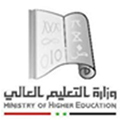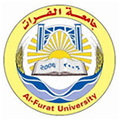آخر الأخبار
المكافحة الحيوية لفراشة التمر الصغرى (الحميرة) batrachedra amydraule meyr:(lepidoptera:cosmopteridar) في الجوف (المملكة العربية السعودية)
2010, Volume 2, issue 8,pp 383-398| Cite as
Active biological fighting of batrachedra amydraule meyr:(lepidoptera:cosmopteridar) in AL-Jouf area in Saudi Arabia
| authors |
Safar Al-Qahtani,Radwan Mohammed Yaqat |
| Abstract |
Lesser date moth Batrachedra amydraula Meyr (Lepidoptera: Cosmopteridae) is considered a dangerous pest of date fruit in different regions of Saudi Arabia and the neighboring countries causing high yield losses in three generations. As part of Watania Agriculture efforts in the area of organic date production in different projects, a biological control lab was established for production of natural enemies of pests. A study was carried out to evaluate the efficiency of both natural enemies: egg parasite of Trichogramma principium (Hym., Trichogrammatidae) and larva parasite of Bracon brevicornis (Hym., Braconidae) using different doses to control lesser date moth at egg and larva stages in first and second generations. The result indicated that release of 500 and 1000 egg parasite per tree effectively reduced an infestation at a rate of 66.1% and 78.3% in the first generation compared with control. In the second generation, however, reduction was 88% and 95.1% for both release rates of the biological agents. Release of both natural enemies (1000 egg parasite per tree and 3000 larva parasite per hectare at final stage of larva growth of first generation led to reduction in fruit infestation up to 96.4% in the damages caused by second generation. It can be concluded that both parasites effective in controlling the lesser date moth in organic date farming in Al Jouf.
Key words: biological control, lesser date moth, Batrachedra amydraula, Trichogramma principium, Bracon brevicornis |
| الكاتب |
سفر القحطاني,رضوان محمد ياقتي |
| الملخص |
تعد فراشة التمر الصغرى. Batrachedra amydraula Meyr من الآفات الخطيرة التي تسبب أضرارا كبيرة للتمر بأجيالها الثلاثة في مناطق مختلفة من المملكة العربية السعودية والدول المجاورة. وفي إطار الزراعة العضوية التي تتبناها الوطنية الزراعية في زراعة وإنتاج التمر في مشاريعها المختلفة والتي ترافقت مع إنشاء مختبر لتربية الأعداء الحيوية في الجوف. تمت دراسة فعالية كلا من الطفيل البيضي Trichogramma principium ( Trichogrammatidae (Hym.، والطفيل اليرقي Bracon brevicornis ((Hym.، Braconidae ) بجرعات مختلفة في مكافحة بيض ويرقات الجيلين الأول والثاني لفراشة التمر الصغرى . أظهرت النتائج بأن أطلاق500 و 1000 طفيل بيضي للشجرة الواحدة خفض الإصابة بمقدار . 66.1% و و 78.3% بيرقات الجيل الأول مقارنة مع الشاهد و 88% و. 95.1% بالنسبة ليرقات الجيل الثاني وقد أدى إطلاق نوعين من الطفيليات ( 1000 طفيل بيضي للشجرة) و كمية 3000 طفيل يرقي /هكتار عند وصول يرقات الجيل الأول للعمر الأخير إلى خفض الإصابة بمقدار 96.4% في الجيل الثاني.وقد أظهرت النتائج فعالية مرضية للطفيلين المستخدمين في مكافحة فراشة التمر الصغرى في ظل الزراعة العضوية في الجوف. الكلمات الدالة: فراشة التمر الصغرى، مكافحة حيوية، طفيليات بيضية ويرقية، سعودية |














